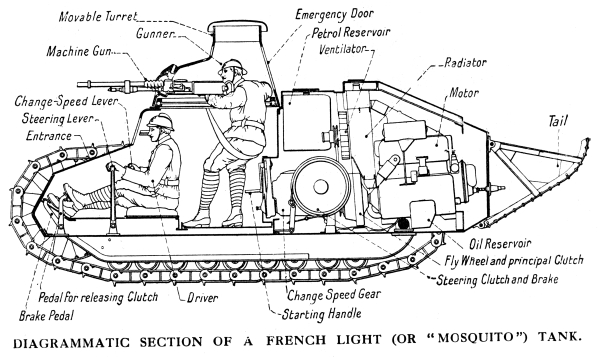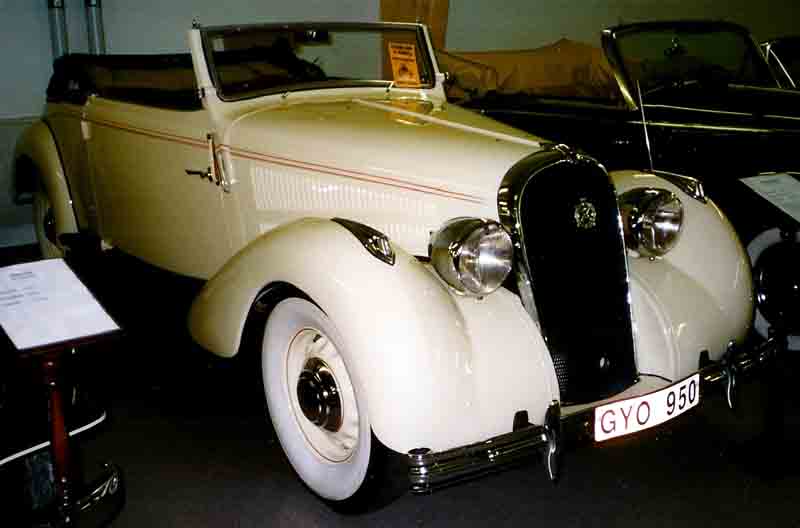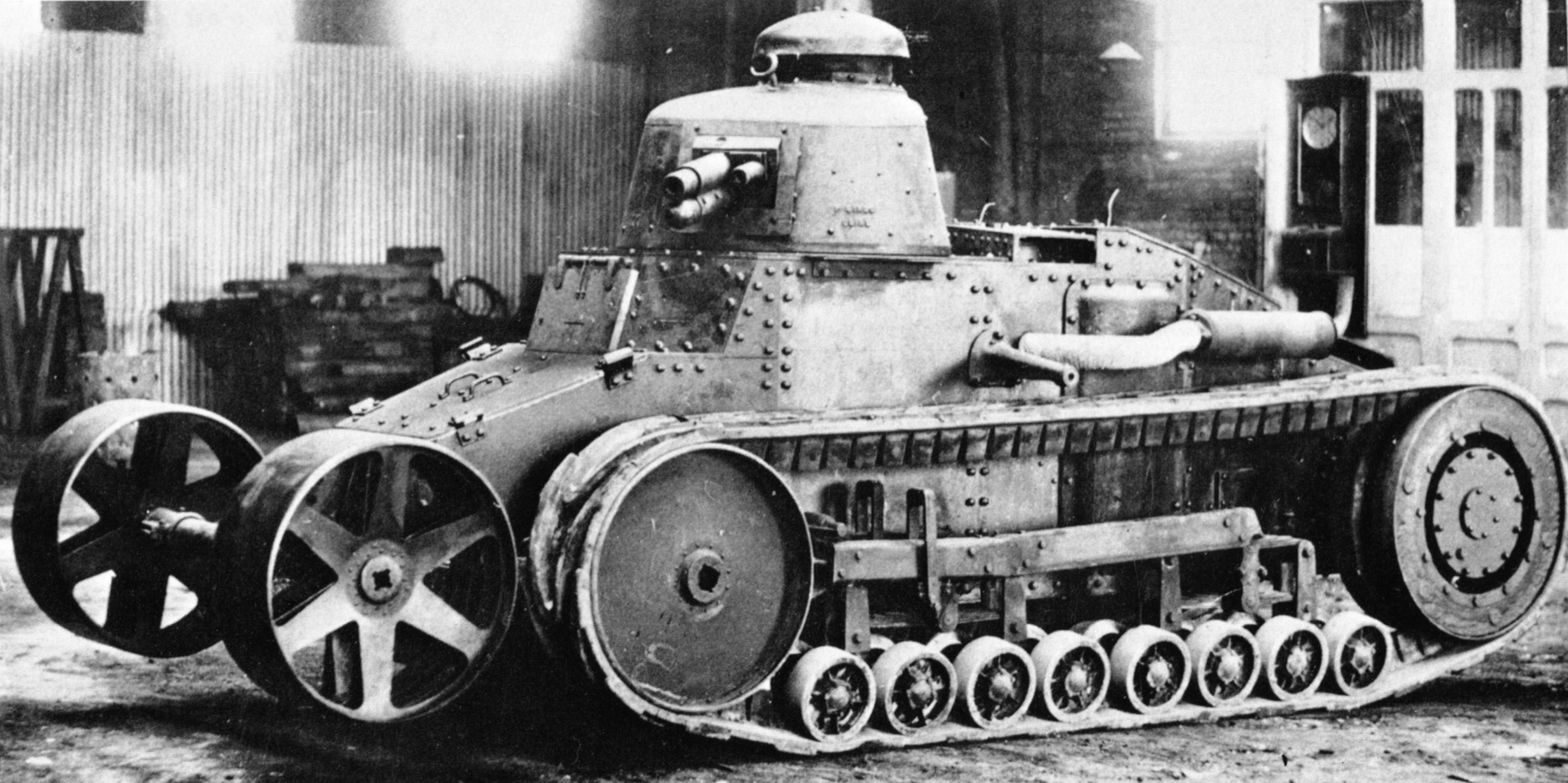|
Renault R35
The Renault R35, an abbreviation of ''Char léger Modèle 1935 R'' or R 35, was a French light infantry tank of the Second World War. Designed from 1933 onwards and produced from 1936, the type was intended as an infantry support light tank, equipping autonomous tank battalions, that would be allocated to individual infantry divisions to assist them in executing offensive operations. To this end it was relatively well-armoured but slow and lacking a good antitank capacity, fitted with a short 37 mm gun. At the outbreak of the war, the antitank role was more emphasized leading to the development and eventual production from April 1940 of a subtype with a more powerful longer gun, the Renault R40. It was planned to shift new production capacity to the manufacture of other, faster, types, but due to the defeat of France, the R35/40 remained the most numerous French tank of the war, with about 1685 vehicles having been produced by June 1940. At that moment it had also been exp ... [...More Info...] [...Related Items...] OR: [Wikipedia] [Google] [Baidu] |
Yad La-Shiryon
Yad La-Shiryon (officially: The Armored Corps Memorial Site and Museum at Latrun; ) is Israel's official memorial site for fallen soldiers from the Israeli Armor Corps, armored corps, as well as one of the most diverse tank museums in the world. The cornerstone for Yad La-Shiryon was laid on . The site was created through the initiative of veteran officers of the armored corps. The outdoor display includes 110 tanks and other armored fighting vehicles, both Israeli and captured enemy examples including the Merkava and T-34, T-54, T-55, T-62 tanks, as well as vehicles obtained or purchased from allied nations specifically for diversifying the collection like the German Leopard tank or the only T-72 on display in Israel. Other notable items include: an M4 Sherman tank mounted high atop a former British Water tower, water tower; a collection of mobile bridges constructed by the IDF (Israeli Defense Forces) which can be carried by tanks and erected while under fire; captured enemy ve ... [...More Info...] [...Related Items...] OR: [Wikipedia] [Google] [Baidu] |
Renault FT
The Renault FT (frequently referred to in post-World War I literature as the FT-17, FT17, or similar) is a French light tank that was among the most revolutionary and influential tank designs in history. The FT was the first production tank to have its armament within a fully rotating turret.Although a rotating turret had been a feature of some earlier tank designs or prototypes, and had been incorporated in Armored car (military), armoured cars for several years, no tank with a turret had entered service. The Renault FT's configuration (crew compartment at the front, engine compartment at the back, and main armament in a revolving turret) became and remains the standard tank layout. Consequently, some armoured warfare historians have called the Renault FT the world's first modern tank. Over 3,000 Renault FT tanks were manufactured by France, most of them in 1918. After World War I, FT tanks were exported in large numbers. Copies and derivative designs were manufactured in the Un ... [...More Info...] [...Related Items...] OR: [Wikipedia] [Google] [Baidu] |
German Re-armament
German rearmament (''Aufrüstung'', ) was a policy and practice of rearmament carried out by Germany from 1918 to 1939 in violation of the Treaty of Versailles, which required German disarmament after World War I to prevent it from starting another war. It began on a small, secret, and informal basis shortly after the treaty was signed and was openly and massively expanded after the Nazi Party came to power in 1933. Under the Weimar Republic, the early steps towards rearmament began with support for paramilitary groups including the ''Freikorps'' and Citizens' Defense, although the government banned most such groups by 1921. Secret cooperation between the German military and Soviet Russia began in 1921 and grew to include training in and manufacture of weapons banned by the Versailles Treaty. In 1926, military leadership revealed its previously secret programs to the civilian government and with its cooperation embarked on two large-scale rearmament programs designed to create ... [...More Info...] [...Related Items...] OR: [Wikipedia] [Google] [Baidu] |
Vehicle Armour
Military vehicles are commonly armoured (or armored; American and British English spelling differences#-our, -or, see spelling differences) to withstand the impact of Fragmentation (weaponry), shrapnel, bullets, Shell (projectile), shells, Rocket (weapon), rockets, and missiles, protecting the personnel inside from enemy fire. Such vehicles include armoured fighting vehicles like tanks, aircraft, and ships. Civilian vehicles may also be armoured. These vehicles include cars used by officials (e.g., Official state car, presidential limousines), reporters and others in conflict zones or where violent crime is common. Civilian Armored car (valuables), armoured cars are also routinely used by security firms to carry money or valuables to reduce the risk of highway robbery or the Carjacking, hijacking of the cargo. Armour may also be used in vehicles to protect from threats other than a deliberate attack. Some spacecraft are equipped with specialised armour to protect them against im ... [...More Info...] [...Related Items...] OR: [Wikipedia] [Google] [Baidu] |
Louis Renault (industrialist)
Louis Renault (; 12 February 1877 – 24 October 1944) was a French industrialist, one of the founders of Renault, and a pioneer of the automobile industry. Renault built one of France's largest automobile manufacturing concerns, which still bears his name. During World War I his factories contributed massively to the war effort, notably so by the creation and manufacture of the first tank of modern configuration, the Renault FT tank. Accused of collaborating with the Germans during World War II, he died while awaiting trial in liberated France toward the end of 1944 under uncertain circumstances. His company was seized and nationalized by the provisional government of France, although he died before he could be tried. His factories were the only ones permanently expropriated by the French government. In 1956, ''Time'' magazine described Renault as "rich, powerful and famous, cantankerous, brilliant, often brutal, the little Napoleon of an automaking empire — vulgar, loud, ... [...More Info...] [...Related Items...] OR: [Wikipedia] [Google] [Baidu] |
Forges Et Chantiers De La Mediterranée
Forges or Les Forges may refer to: In Belgium * Forges, Belgium, a village and a former municipality that is now a part of Chimay, Wallonia In France * Forges, Charente-Maritime, in the Charente-Maritime department * Forges, Maine-et-Loire, in the Maine-et-Loire department * Forges, Orne, in the Orne department * Forges, Seine-et-Marne, in the Seine-et-Marne department * Forgès, in the Corrèze department * Les Forges, Deux-Sèvres, in the Deux-Sèvres department * Les Forges, Morbihan, in the Morbihan department *Les Forges, Vosges, in the Vosges department * Forges-la-Forêt, in the Ille-et-Vilaine department * Forges-les-Bains, in the Essonne department *Forges-les-Eaux, in the Seine-Maritime department * Forges-sur-Meuse, in the Meuse department * Auvillers-les-Forges, in the Ardennes department * Bailly-aux-Forges, in the Haute-Marne department * Briis-sous-Forges, in the Essonne department * Châtenois-les-Forges, in the Territoire de Belfort department *Cousances-les-Forg ... [...More Info...] [...Related Items...] OR: [Wikipedia] [Google] [Baidu] |
Atelier De Construction De Puteaux
An atelier () is the private workshop or studio of a professional artist in the fine or decorative arts or an architect, where a principal master and a number of assistants, students, and apprentices can work together producing fine art or visual art released under the master's name or supervision. Ateliers were the standard vocational practice for European artists from the Middle Ages to the 19th century, and common elsewhere in the world. In medieval Europe this way of working and teaching was often enforced by local guild regulations, such as those of the painters' Guild of Saint Luke, and of other craft guilds. Apprentices usually began working on simple tasks when young, and after some years with increasing knowledge and expertise became journeymen, before possibly becoming masters themselves. This master-apprentice system was gradually replaced as the once powerful guilds declined, and the academy became a favored method of training. However, many professional artists ... [...More Info...] [...Related Items...] OR: [Wikipedia] [Google] [Baidu] |
Delaunay-Belleville
Automobiles Delaunay-Belleville () was a French luxury automobile manufacturer at Saint-Denis, France, north of Paris. At the beginning of the 20th century they were among the most prestigious cars produced in the world, and perhaps the most desirable French marque. History Julien Belleville had been a maker of marine boilers from around 1850. Louis Delaunay joined the firm in 1867 and married Belleville's daughter. He changed his name to Delaunay-Belleville and succeeded his father-in-law in charge of the company. S.A. des Automobiles Delaunay-Belleville was formed in 1903 by Louis Delaunay and . Barbarou's family owned the boiler making company Belleville in Saint-Denis, with boiler design influences inspired by the company. Barbarou, then 28, had experience working for Clément, Lorraine-Dietrich and Benz and was responsible for design and styling, including the trademark round grille shell. The first car was exhibited at the 1904 Paris Salon, and it received enor ... [...More Info...] [...Related Items...] OR: [Wikipedia] [Google] [Baidu] |
Hotchkiss H35
The Hotchkiss H35 or was a French Tanks in France#Inter War, cavalry tank developed prior to World War II. Despite having been designed from 1933 as a rather slow but well-armoured light infantry support tank, the type was initially rejected by the French Infantry because steering proved difficult during cross-country use, and was instead adopted in 1936 by the French Cavalry arm. From 1938 an improved version was produced with a more powerful engine, the ''Char léger modèle 1935 H modifié 39'', which from 1940 was also fitted with a longer, more powerful 37 mm gun. It was intended to make this improved variant the standard light tank, with at least four thousand produced to equip new armoured divisions of both the Cavalry and the Infantry arms, but due to the Battle of France, defeat of France in June 1940, total production of both subtypes was limited to about 1200 vehicles. For the remainder of the war Germany and its allies used captured Hotchkiss tanks in several ... [...More Info...] [...Related Items...] OR: [Wikipedia] [Google] [Baidu] |
Hotchkiss Et Cie
Société Anonyme des Anciens Etablissements Hotchkiss et Compagnie was a French arms and, in the 20th century, automobile manufacturer first established by American gunsmith Benjamin B. Hotchkiss. He moved to France and set up a factory, first at Viviez near Rodez in 1867, manufacturing arms used by the French in the Franco-Prussian War of 1870, then moving at Saint-Denis, Seine-Saint-Denis, Saint-Denis near Paris in 1875. It was merged into and succeeded by Thomson-CSF, now Thales Group. Arms An example of the company's output was the Hotchkiss revolving cannon (see picture from a privately circulated book dated 1874 by Alfred Koerner, later chairman of the company). The cannon had five barrels each able to fire 43 shells a minute a distance of one mile; it was made in four sizes from 37 mm to 57 mm, the largest intended for naval use. At the turn of the twentieth century, the company introduced the gas operation, gas-operated Hotchkiss machine gun, a sturdy and rel ... [...More Info...] [...Related Items...] OR: [Wikipedia] [Google] [Baidu] |
Char D1
The Char D1 was an Interwar period, Interwar French light tank. The French plan of 1926, calling for the creation of a Tanks in France#Inter War, Light Infantry Support Tank, led to the development of the existing Renault NC1 prototype into the Char D1. One hundred and sixty vehicles of this type were produced between 1931 and 1935. There was a pre-series of ten vehicles and later 150 standard vehicles were built. Until 1936 the vehicles were fitted with Renault FT turrets because the intended cast ST2 turrets were not yet ready. The ST2 turret was armed with a short 47mm SA34 tank gun with a coaxial 7.5mm machine gun. The hull carried a 7.5mm MG in the bow. The type did not serve as an infantry support tank as originally intended, but as France's major battle tank of the early 1930s; it was quickly phased out in 1937 because of its mechanical unreliability and relegated to colonial units in North Africa. Development After World War I, France possessed a very large fleet of Renau ... [...More Info...] [...Related Items...] OR: [Wikipedia] [Google] [Baidu] |










